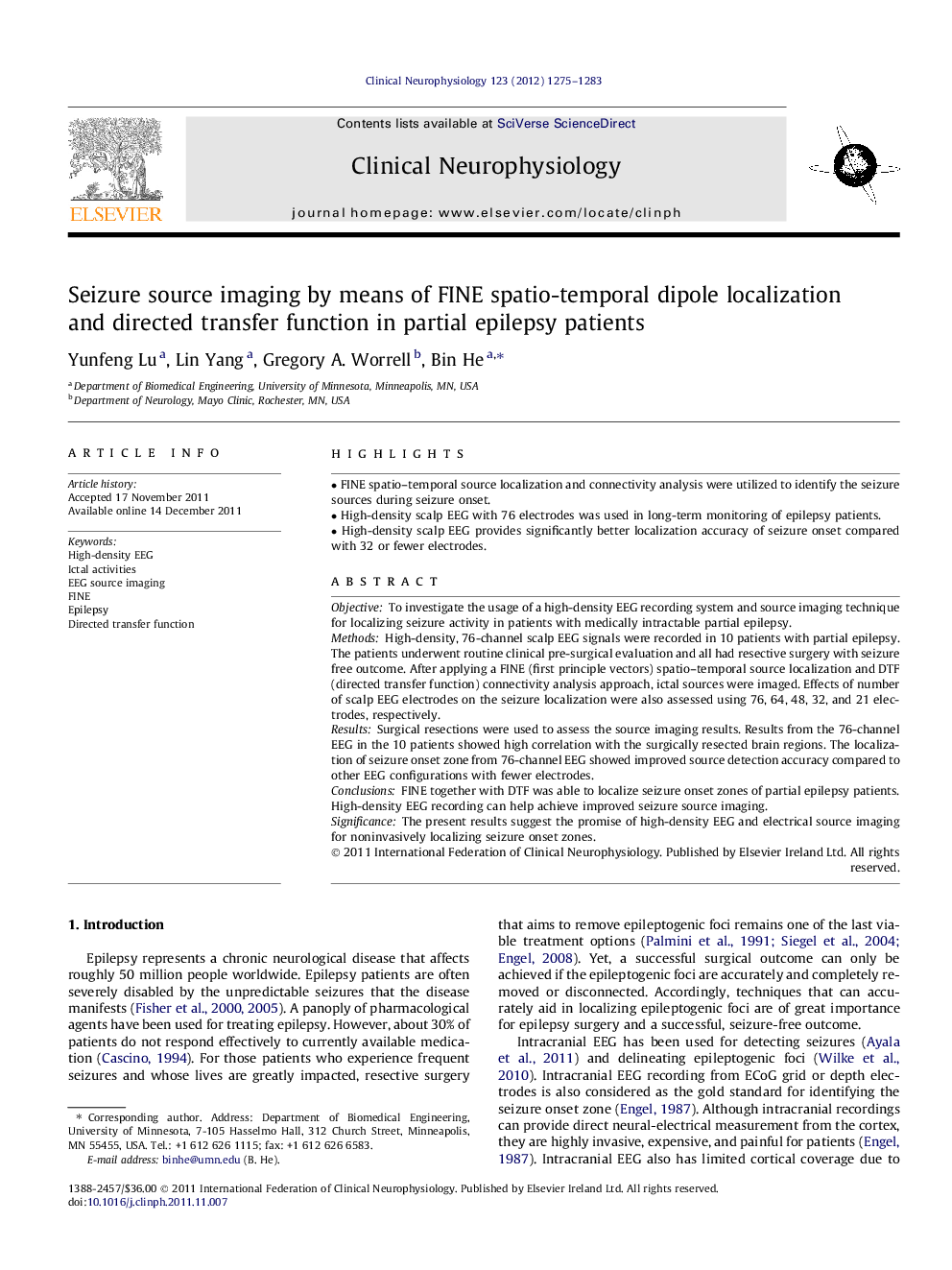| Article ID | Journal | Published Year | Pages | File Type |
|---|---|---|---|---|
| 3045489 | Clinical Neurophysiology | 2012 | 9 Pages |
ObjectiveTo investigate the usage of a high-density EEG recording system and source imaging technique for localizing seizure activity in patients with medically intractable partial epilepsy.MethodsHigh-density, 76-channel scalp EEG signals were recorded in 10 patients with partial epilepsy. The patients underwent routine clinical pre-surgical evaluation and all had resective surgery with seizure free outcome. After applying a FINE (first principle vectors) spatio–temporal source localization and DTF (directed transfer function) connectivity analysis approach, ictal sources were imaged. Effects of number of scalp EEG electrodes on the seizure localization were also assessed using 76, 64, 48, 32, and 21 electrodes, respectively.ResultsSurgical resections were used to assess the source imaging results. Results from the 76-channel EEG in the 10 patients showed high correlation with the surgically resected brain regions. The localization of seizure onset zone from 76-channel EEG showed improved source detection accuracy compared to other EEG configurations with fewer electrodes.ConclusionsFINE together with DTF was able to localize seizure onset zones of partial epilepsy patients. High-density EEG recording can help achieve improved seizure source imaging.SignificanceThe present results suggest the promise of high-density EEG and electrical source imaging for noninvasively localizing seizure onset zones.
► FINE spatio–temporal source localization and connectivity analysis were utilized to identify the seizure sources during seizure onset. ► High-density scalp EEG with 76 electrodes was used in long-term monitoring of epilepsy patients. ► High-density scalp EEG provides significantly better localization accuracy of seizure onset compared with 32 or fewer electrodes.
